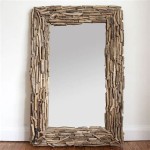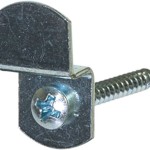Can I Do Screen Mirroring Without Wifi?
Screen mirroring, the ability to wirelessly display the content of one device's screen on another, is a highly convenient feature used for presentations, entertainment, and gaming. Many associate screen mirroring with Wi-Fi networks, believing it to be a prerequisite. However, several alternative methods exist to achieve screen mirroring without relying on a Wi-Fi connection.
Wired Connections
One of the most reliable ways to mirror a screen without Wi-Fi is by using a wired connection. This method typically involves cables such as HDMI, USB-C, or Lightning cables, depending on the source and destination devices. Connecting the devices directly through a cable provides a stable, high-bandwidth connection, resulting in minimal lag and high-quality video and audio transmission. This approach is particularly suitable for situations requiring high performance, such as gaming or streaming high-definition video.
The specific cable required depends on the device's ports. For instance, connecting a laptop to a television might involve an HDMI cable, while mirroring a smartphone screen to a monitor might necessitate a USB-C to HDMI adapter or a similar setup. Consult the device manufacturers' documentation to determine the appropriate cable and adapter combination.
Miracast and Wi-Fi Direct
While often associated with Wi-Fi, technologies like Miracast and Wi-Fi Direct function by creating a direct wireless connection between devices, independent of a traditional Wi-Fi network. These protocols establish a peer-to-peer connection, allowing devices to communicate directly without needing a router or access point. This allows for screen mirroring in environments where a Wi-Fi network is unavailable or impractical.
Miracast, in particular, is integrated into many modern smart TVs and devices. Check the device specifications to confirm compatibility. If both the sending and receiving devices support Miracast, enabling the feature on both should allow them to discover each other and establish a connection for screen mirroring.
Similarly, Wi-Fi Direct facilitates direct connections between devices. While offering similar functionality to Miracast, the setup process may vary depending on the specific devices involved. Users should consult their device's documentation for instructions on enabling and utilizing Wi-Fi Direct for screen mirroring.
Bluetooth for Specific Applications
While not suitable for mirroring the entire screen in the same way as the previously mentioned methods, Bluetooth can be used for specific screen mirroring applications. For instance, some devices allow audio mirroring over Bluetooth, which can be useful for sharing music or other audio content from a smartphone to a Bluetooth speaker or headphones. Furthermore, certain apps utilize Bluetooth for sharing specific content, like photos or presentations, on a secondary display, though this is generally not a full screen mirroring experience.
The limitations of Bluetooth in terms of bandwidth and range make it less ideal for video-intensive mirroring scenarios. However, for specific audio applications or limited content sharing, it can serve as a viable alternative when Wi-Fi is unavailable.
DLNA and Other Streaming Protocols
Devices supporting DLNA (Digital Living Network Alliance) and similar streaming protocols can share media content without requiring a direct screen mirror. While not true screen mirroring in the sense of replicating the entire display, DLNA allows users to stream photos, videos, and music from one device to another over a local network. This can be achieved even without a Wi-Fi connection, provided the devices are connected to the same wired network.
This method does not mirror the device's screen precisely but allows users to share media content on a larger display, offering a comparable experience in certain situations. The functionality of DLNA and other streaming protocols depends on the devices’ compatibility and network setup.
Choosing the Right Method
The most appropriate method for screen mirroring without Wi-Fi depends on the specific devices involved and the desired use case. Wired connections offer the highest performance and stability, ideal for gaming and high-definition video streaming. Miracast and Wi-Fi Direct provide wireless convenience without the need for a network infrastructure. Bluetooth can be useful for specific audio applications or limited content sharing. Finally, DLNA and other streaming protocols offer a means of media sharing on a local network, even without Wi-Fi, providing a comparable experience in specific scenarios.

How To Mirror Phone Screen Without Wifi 4 Simplest Way Help

How To Screen Mirror Without Wifi 2024 Updated

2024 Tutorial How To Mirror Phone Tv Without Wi Fi

How To Connect Phone Tv Without Wi Fi Techwiser

How To Mirror Phone Screen Without Wifi 4 Simplest Way Help

How To Screen Mirror Iphone Ipad Without Wifi 3 Ways Airplay Guru

How To Screen Mirroring Any Android Phone Tv Without Wifi

2024 Updated How To Mirror Android Pc Without Wi Fi

3 Ways To Mirror Iphone Tv Without Apple Istreamer

How To Mirror Phone Tv Without Wifi 7 Easy Methods Gawvi








